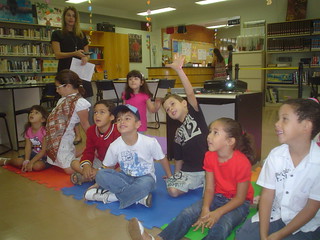Can
“seeing” your students influence your relationship with them and their
willingness to communicate? What does this question really mean?
Let’s examine
the following situation: You have created an eminently respectable lesson plan;
it includes the requisite phases for pairwork, attention to textbook activities
and grammar orientation, hands-on dynamics to practice the topic of the day,
periodic white-board use, and appropriate technological inclusions. Your
“flight check” for that last part resembles NASA pre-lift-off procedures as you
punctiliously check CD tracks, PPT slides, computer connections, volume
register…..all that is essential to take your lesson safely to its destination.
Your concentration on your multiple responsibilities occupies your thoughts
almost exclusively as you enter your classroom and attend to setting up what
your students will experience for the next 150 minutes. Ah, yes…the students….
a gaggle of girls and a band of boys, all dragging roller bags and the
paraphernalia of study and play…. assemble in noisy desks, a crowd with a
collective identity. Who among them so you see and greet? Believe it or not,
this could be a moment of potential significance – the fresh encounter, the
time to reconnect and begin anew.
 There is one of two ways to envision this
scenario: (a) The teacher is absorbed in class prep, back turned, the students gathering
facelessly in their predictable arrangements, or (b) the teacher greets the
students as they enter, acknowledging a new hairstyle, a happy face, a new pair
of bizarrely bright orange running shoes…..If it can be managed, the time for
the lesson and techno-check is when the classroom is empty, silent, awaiting
the next round of action. The time for precious rejoining with your students is
when they enter the environment you share; that is when you “see” them and
rekindle the energy that fuels what you will experience together in those
minutes that you hope will be memorable, that will make your students look
forward to the days and weeks to come.
There is one of two ways to envision this
scenario: (a) The teacher is absorbed in class prep, back turned, the students gathering
facelessly in their predictable arrangements, or (b) the teacher greets the
students as they enter, acknowledging a new hairstyle, a happy face, a new pair
of bizarrely bright orange running shoes…..If it can be managed, the time for
the lesson and techno-check is when the classroom is empty, silent, awaiting
the next round of action. The time for precious rejoining with your students is
when they enter the environment you share; that is when you “see” them and
rekindle the energy that fuels what you will experience together in those
minutes that you hope will be memorable, that will make your students look
forward to the days and weeks to come. 

